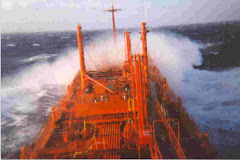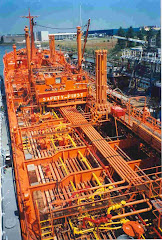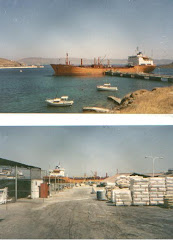Danaos has been a perennially weak stock since the 2008 meltdown. The company suffers from high bank leverage and a heavy capex budget. Earnings have been marginal at best. In 2010, it racked up a whopping loss of US$ 101 million. This year, Danaos negotiated an excellent restructuring agreement with its senior lenders that also covers its future capex needs. It has significant long term charter cover. Is Danaos now out of the woods?
Danaos has a fleet with an attractive age profile. It has kept pace with changing industry dynamics, with almost 50% of its fleet capacity in the 8,000+ TEU range. Its fleet’s average age is 6.27 years and it has a new building program of 13 containerships to be delivered through mid-2012.
Danaos recently carried out a massive restructuring of its debt. The company raised in excess of $1 billion through a $200 million equity issue and new debt commitments of $818 million. Further, Danaos announced formal completion of the restructuring of its new building capex finance obligations. Fortunately, Danaos is a listed company and has the size and clout to pull off this this operation, underscoring the resilience of the publicly listed shipping company business model.
The fleet is heavily contracted with average length charters between 8 to 10 years. This employment profile facilitated the loan restructuring and capex commitments. Needless to say, the loan repayment was tailored to this cash flow with no bullet payments until 2019. Interest expenses are not negligible with projections of $191/$202/$234 million in years 2011/ 2012/ 2013 respectively, which represent about 50% of anticipated EBITDA (US$ 317/ 433/ 442 million respectively).
The weakest element here would appear to be the 29% exposure to Hyundai Merchant Marine (HMM) and 28% exposure to CMA-CGM as charterers. HMM has a gearing of three times debt to equity. It announced heavy losses of $ 205.080 million for the first semester of 2011. It is a smaller liner company vulnerable to pricing pressures from larger operators like Maerk in the fight for market share.
CMA CGM was downgraded by Fitch to BBB- with negative outlook and then Fitch ceased coverage. Their first semester 2011 profits were down 72% to $237 million from 2010. CMA CGM has been selling vessels at a discount to complete the reorganizing of $7 billion-worth of debt overseen by French court authorities, part of which involved Turkey’s Yildirim Group injecting $500 million into the company in exchange for shares.
Liner companies are generally considered too big to fail (TBTF) businesses. Should a major liner company go into bankruptcy, the fall-out would be substantial given that these companies charter about half their fleet from vessel provider companies like Danaos.
Alternatively, with a deepening recessionary environment, there are prospects of charter party renegotiation as occurs normally in shipping sectors like tankers and dry cargo. Theoretically, liner companies would have substantial negotiating power given the concentration of the industry and total dependence of vessel providers on them for employment.








